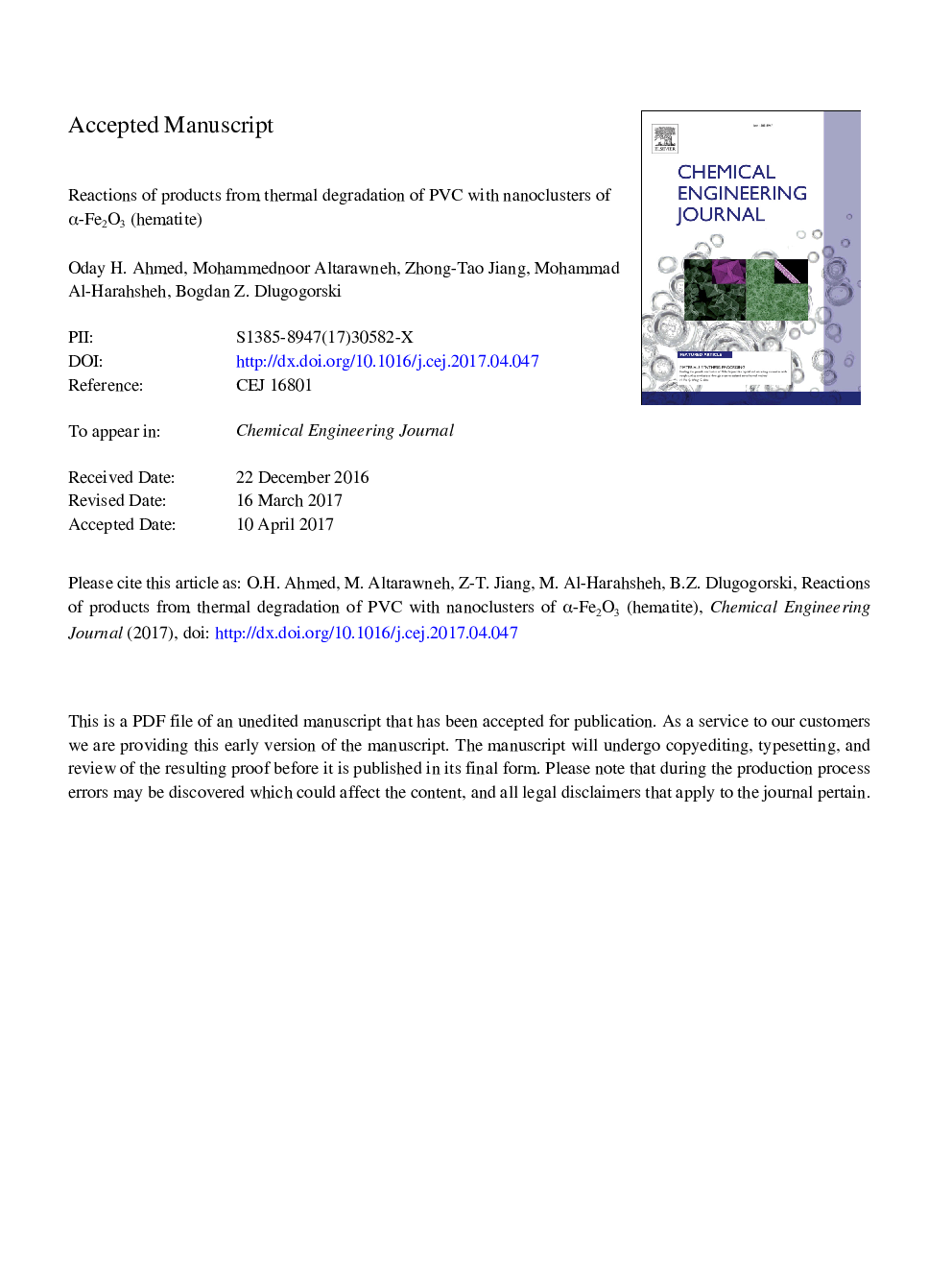| Article ID | Journal | Published Year | Pages | File Type |
|---|---|---|---|---|
| 4763055 | Chemical Engineering Journal | 2017 | 34 Pages |
Abstract
Polyvinyl chloride (PVC) plastics constitute a large fraction of buildings, packaging and electronic devices, whereas, the annual emission electric arc furnace dust (EAFD) from steel manufacturing operations has recently peaked at nearly 6 Mt. Co-pyrolysis of PVC with EAFD currently represents a focal abatement technology for both categories of pollutants. However, despite of several experimental investigations; the mechanisms underlying interaction between EAFD and PVC remain largely speculative. Herein, we examine theoretically reactions of major products from thermal degradation of PVC with nanoclusters of iron (III) oxide, α-Fe2O3 (hematite) as a representative model for the various metal oxides in EAFD. The facile nature for the H-Cl bond fission over hematite is in line with experimental findings, pointing out to formation of iron chlorides from pyrolysis of Fe2O3-PVC mixtures. Interaction of selected chlorinated C1-C3 cuts with the hematite structure preferentially proceeds via a dissociative adsorption pathway. Results from this study shall be instrumental to understand, on a precise molecular basis, fixation of halogens on transitional metal oxides; a viable thermal recycling approach for polymeric materials laden with halogenated constituents.
Related Topics
Physical Sciences and Engineering
Chemical Engineering
Chemical Engineering (General)
Authors
Oday H. Ahmed, Mohammednoor Altarawneh, Zhong-Tao Jiang, Mohammad Al-Harahsheh, Bogdan Z. Dlugogorski,
